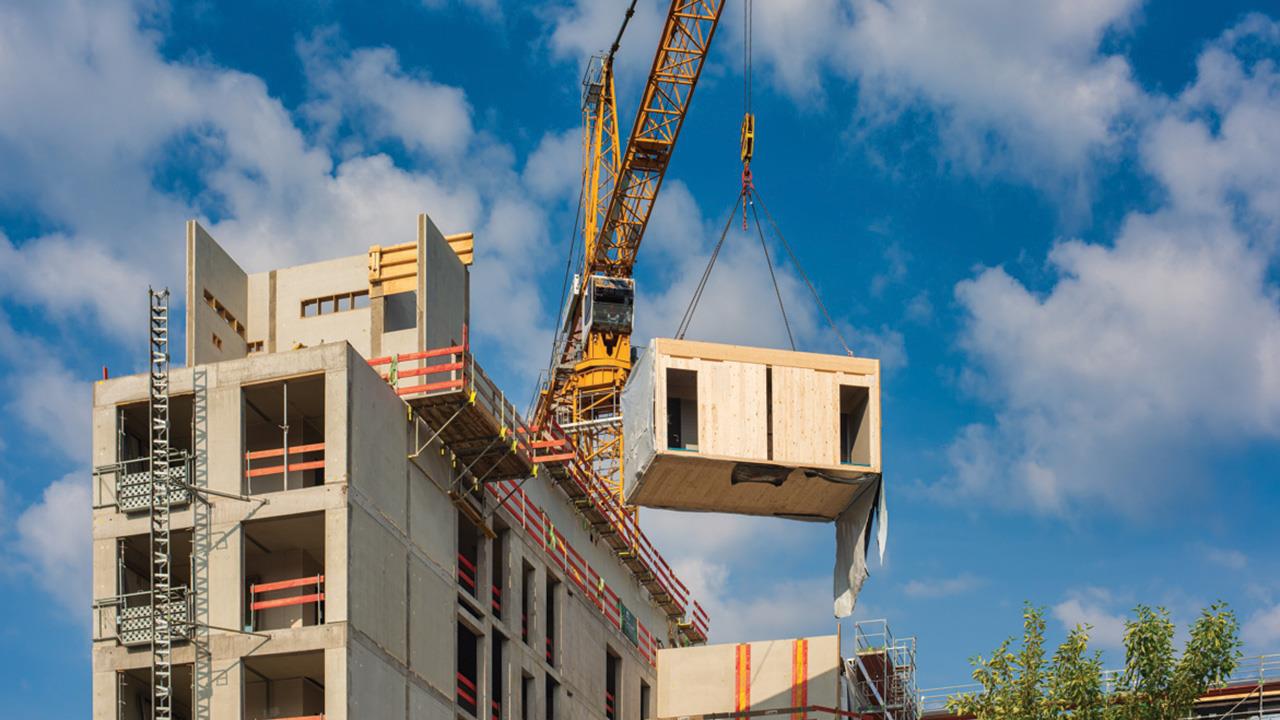

With heightened pressure on the construction industry to build greener buildings, a shortage of skilled workers, and the housing crisis, modular building is a method of construction that is likely to play a vital role in achieving house building targets in the coming years.
Although progress has been made, the number of new homes built still needs to increase by approximately a quarter to reach 300,000 homes per annum, which would be an extremely tall order using traditional methods of construction. Due to the scale of this challenge, it is expected that over the next 20 years, the proportion of homes built using modern methods of construction (MMC) will rise from today’s 6-10% to closer to 20%, according to Savills.
Modular construction and pre-fitting pipework could have a significant impact on the ways plumbers and heating engineers operate within the industry, whether in domestic or commercial enterprises. Similarly, the development of off-site construction will require fundamental changes to the way people preparing to enter the trade are trained. However, many see these developments as an opportunity – a revolution even – rather than a hindrance.
Waste not, want not
Following the Spring Budget 2021 and the government’s announcement of an MMC taskforce, together with £10 million funding to boost the sector, off-site construction has never been in a stronger position to lead the way in sustainability.
One reason for this is because it drastically reduces the amount of waste produced. Off-site production often results in increased quality control, therefore greater precision, meaning that on-site waste can be virtually eliminated.
Factory assembly also means that any waste that is produced can be more easily controlled, helping to avoid contamination, and allowing excess materials to be separated and treated correctly as waste, or even re-used on future projects rather than being thrown away, which often is not the case on construction sites.
Polymer-based pipework and radiant heating systems lend themselves perfectly to modern factory-based construction; methods such as manifold plumbing, for example, reduce the number of fittings required, saving on costs and minimising the risk of leakage.
Installing pre-insulated pipework into modular assemblies in a controlled environment also helps to minimise heat loss and maximises energy efficiencies. Innovative product features mean that all connections can be fully reviewed once installed and, when combined with a pressure test using air, engineers can be certain of the installation quality before the modular item leaves the factory.
Manufacturers are also able to work more closely with the installation teams providing training and regular reviews to ensure that best working practices are upheld, therefore guaranteeing consistent product and installation quality.
Optimum use of space
Space cooling is the fastest-growing building end-use and is expected to remain so over the coming decades. On the basis of stated policy intentions, cooling demand is expected to grow at more than 3% a year for the next three decades, eight times faster than demand for heating in the last 30 years, according to International Energy Agency.
As a result of this, future-oriented temperature control must include both heating and cooling while being as energy efficient as possible.
As radiant heating and cooling systems can be installed under the floor, or behind a wall or ceiling, they take up less floor space than convectional heating systems, such as radiators. This makes them perfect for modular builds that may have restricted flexibility, or limited sizes and shapes – plus, it is relatively easy to use these systems for cooling too.
In fact, a major benefit of radiant systems is their high cooling output. By virtue of the physical properties of warm air, the cooling output of a radiant system installed in the ceiling is the highest in the industry.
However, even an underfloor system is effective enough when it comes to providing sufficient cooling in today’s well-insulated buildings. This is because radiant temperature control prevents the build-up of heat by reducing the extent to which building mass heats up, meaning that surfaces are kept cooler, an undeniable advantage for what are expected to become longer periods of warmer weather.
Embracing new opportunities
With sustainability at the top of everyone’s agenda, collaborating across the supply chain to adopt more modern methods of construction will help us to reduce the industry’s environmental footprint. They say slowly but surely wins the race, but with huge targets in place for the sector over the next decade, we don’t have time to sit back and wait – action needs to be taken now.
To create real change within the wider construction sector, it is essential that the heating and plumbing industry not only considers the energy efficiency and environmental qualities of the systems installed, but that we also adopt new ways of working in order to become truly sustainable.
If you'd like to keep up-to-date with the latest developments in the heating and plumbing industry, why not subscribe to our weekly newsletters? Just click the button below and you can ensure all the latest industry news and new product information lands in your inbox every week.